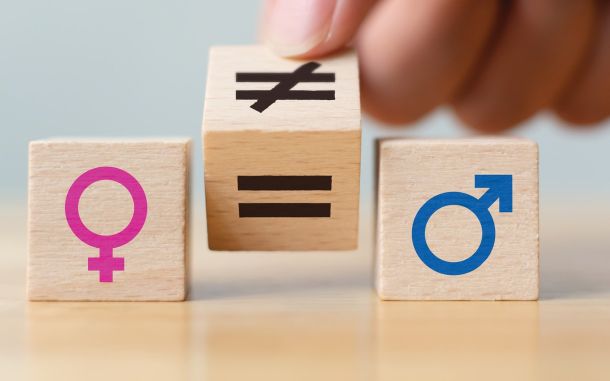Science Square (Issue 142)

In This Article
-
Is hair graying reversible?
-
Doomscrolling: Obsession with pain
-
COVID-19 vaccines promise years of immunity
Is hair graying reversible?
Rosenberg et al. Quantitative mapping of human hair greying and reversal in relation to life stress. eLife, June 2021.
A new study has found that the old rumor about why our hair turns gray is proven to have a scientific basis. Humans tend to lose hair color the older they get as the cells in our hair follicles stop producing the pigment melanin. But there have been many stories of even younger people’s hair losing color almost immediately after a stressful event. While some of these stories are just old fables some cases have also been documented by doctors. In a recent study, scientists collected 400 hair samples from 14 participants from age 9 to 39 with either “some grey hairs” or “two-colored hairs.” By using a newly developed high-resolution imaging technique, scientists were able to collect and compare tiny slices of single hair strands from volunteers. These slices of hair were later analyzed like the rings inside a tree, indirectly showing the health of the follicle as it formed the strand over time including the status of pigmentation. They then analyzed the color of each strand and compared it to the timing of their hair growth. Participants whose hair changed to gray reported experiencing a stressful period in their lives. On the other hand, participants whose gray hairs reversed back to having color reported feeling more relaxed at the time their hair sample was analyzed thus suggesting a link between stress and the graying process. It was found with one of the participants who went on vacation that five of his hairs reverted back to their original color during the vacation. While the color reversal process is intriguing it can only be possible if it is caught early enough in younger ages. There seems to be a window of opportunity during which graying is probably much more reversible than had been considered before. Reducing stress levels in a 70-year-old will likely not darken their hair, or increasing stress in a 10-year-old will be enough to tip their hair over the gray threshold. Although these findings are based on a relatively small sample size they still provided some important insights into the reversible dynamics of hair graying in humans.
Doomscrolling: Obsession with pain
Jezzini et al. A prefrontal network integrates preferences for advance information about uncertain rewards and punishments. Neuron, June 2021.
“Doomscrolling” or “Doomsurfing” describes the act of endlessly scrolling through predominantly negative news on social media. Unfortunately, this bad habit has become widespread during the COVID-19 pandemic. It is still unclear why some people seek out potentially bad news by doomscrolling through horrifying headlines while others try to stay away from negative information. In a recent study, researchers have explored
the underlying biology of a similar curiosity and dread behavior using monkeys. Researchers first used symbols to train monkeys to anticipate a potentially unpleasant event – a puff of air to the face. The first set of symbols alerted the monkeys that a puff of air was a possibility but with a highly variable degree of certainty. A second set of symbols eliminated the doubt, communicating that either a puff of air to the face was certain or nothing happened. Behavior analyses revealed that some monkeys trained their eyes on the second set of symbols while others averted their look in order to avoid the potentially bad news. A simultaneous monitoring of neural activity in the brains of the monkey models showed that the anterior cingulate cortex separately processes information about both good and bad possibilities. Meanwhile, a second area, the ventrolateral prefrontal cortex, dictates the monkeys' overall attitudes. Understanding the specific brain regions and circuits underlying uncertainty is a critical step for helping people with psychiatric conditions such as anxiety and obsessive-compulsive disorder, which typically manifest an inability to tolerate uncertainty. Moreover, these findings could bring new insights into how to cope with the flood of information in our modern times.
COVID-19 vaccines promise years of immunity
Turner et al. SARS-CoV-2 mRNA vaccines induce persistent germinal centre responses in humans. Nature. June 2021.
The first two COVID-19 vaccines authorized for emergency use by the Food and Drug Administration (FDA), Pfizer-BioNTech and Moderna, performed very well in clinical trials. But there were still concerns for how long immunity induced by these vaccines would last. A new study found evidence that the immune response to vaccines is both strong and potentially long-lasting. After vaccinations, a specialized structure called the germinal center forms in lymph nodes where broader ranges of B-cells are produced to fight against infections. These centers are immune cell training areas to better recognize the enemy. A better germinal center response is typically accepted as a better vaccine. Researchers found that people who received the Pfizer vaccine still had active germinal cells generating new fighter B-cells even after 4 months of the first injection. In a more longitudinal analysis, 8 out of 10 people still had detectable germinal centers containing B cells after 15 weeks of the first dose. Moreover, Pfizer vaccination generated high levels of neutralizing antibodies effective against at least 3 different major variants. Finally, they found that people who were infected and later vaccinated showed an even more robust immune response. The vaccine clearly adds extra benefit, even in the context of prior infection. The results suggest that a vast majority of vaccinated people will be protected over the long term, possibly a lifetime. One exception to this argument could be elderly people with weak immune systems. They may need additional boosters.









